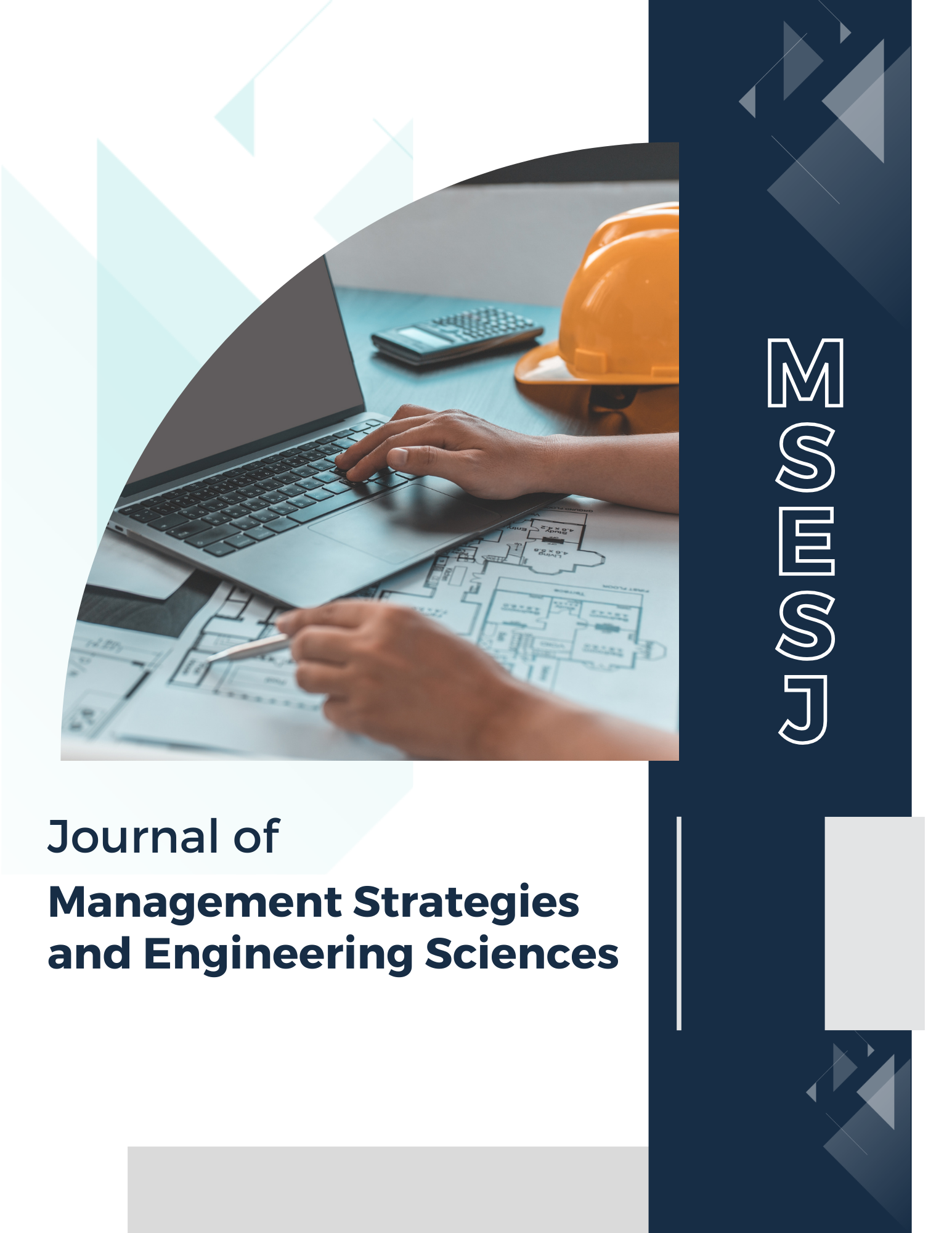Factors Affecting Economic Resilience for Transition from an Oil-Based Economy
Keywords:
Economic resilience, non-oil exports, trade diversification, economic shocksAbstract
Given Iran’s dependence on an oil-based economy—which has been a major factor in the emergence of structural problems and challenges within the national economy—evaluating the economic vulnerabilities resulting from sanctions on Iranian oil exports from various perspectives is crucial for achieving a resilient economy. The main objective of the present study is to compare the resilience of a knowledge-based economy with that of an oil-dependent economy and to assess the resilience of the entrepreneurial sector within Iran’s economy. Numerous indicators have been proposed for measuring resilience; among them, two variables—employment rate and economic growth rate (specifically, the growth rate of value added in knowledge-based [high-tech and medium-tech] sectors and in the oil sector)—will be utilized. To select the variables, key studies in the field of resilience have been reviewed, based on which the independent variables of this study include economic shocks such as sanctions, oil sector shocks, foreign trade shocks, patents and innovations, innovation index, exports and imports of knowledge-based products, and imports of capital goods, which represent the most important explanatory variables. For collecting information in the theoretical foundations section, the library method, note-taking, and consultation of Latin sources, books, and articles relevant to the topic will be employed. Data will be obtained from the websites of the Central Bank of Iran, the World Bank, and the World Economic Forum. After extracting the research data, the variables will be calculated and processed using Excel spreadsheet software. Subsequently, to perform statistical analysis and derive reliable results for evaluating the shocks, the Structural Vector Autoregression (SVAR) model will be applied, and the model estimation will be conducted using EViews software.
References
L. Briguglio, G. Cordina, N. Farrugia, and S. Vella, "Economic vulnerability and resilience: concepts and measurements," Oxford Development Studies, vol. 37, no. 3, pp. 229-247, 2009, doi: 10.1080/13600810903089893.
A. Rose, "Economic Resilience to Disasters," 2009.
V. I. Belov, "Energy Diplomacy and the Formation of a “Resistance Economy” in Iran," Vestnik Rudn International Relations, vol. 25, no. 3, pp. 522-537, 2025, doi: 10.22363/2313-0660-2025-25-3-522-537.
J. Simmie and R. Martin, "The economic resilience of regions: towards an evolutionary approach," Cambridge Journal of Regions, Economy and Society, vol. 3, no. 1, pp. 27-43, 2010, doi: 10.1093/cjres/rsp029.
R. Martin and P. Sunley, "On the notion of regional economic resilience: conceptualization and explanation," Journal of Economic Geography, vol. 15, no. 1, pp. 1-42, 2015, doi: 10.1093/jeg/lbaa025.
O. Lisnyak, "Building regional economic resilience in the context of Eastern Partnership," Baltic Journal of Economic Studies, vol. 2, no. 1, pp. 45-51, 2016, doi: 10.30525/2256-0742/2016-2-1-45-51.
S. Naserpour and H. Azizi, "Investigating the Role of Knowledge-Based Companies in Enhancing Iran's Economic Resilience," Quarterly Journal of Science and Technology Policy, vol. 11, no. 4, pp. 67-88, 2019.
R. Pant and B. J. E. Johansson, "A framework for economic resilience analysis: Using input-output modeling to analyze disruption in production networks," Procedia Computer Science, vol. 28, pp. 293-300, 2013, doi: 10.1016/j.procs.2014.03.036.
M. Ismaili, F. Faraji, and A. Aliakbarzadeh, "Evaluation and Analysis of Economic Resilience Indicators for Single-Product Countries," Quarterly Journal of Economic Policies and Development, vol. 6, no. 24, pp. 153-180, 2019.
K. Abdullayev, F. Guliyev, G. Teymurova, M. Allahverdiyeva, and N. Bagirova, "The Main Areas of Development of the Non-Oil Sector in the Republic of Azerbaijan," Theoretical and Practical Research in Economic Fields, vol. 15, no. 4, p. 983, 2024, doi: 10.14505/tpref.v15.4(32).15.
S. Abdel-Gadir, "Interlinkages Between Economic Diversification and Energy Transition in Oman: A Long-Run and Short-Run Analysis," Journal of Information Systems Engineering & Management, vol. 10, no. 42s, pp. 638-654, 2025, doi: 10.52783/jisem.v10i42s.7986.
A. Jafari and E. Faghihi, "Beyond Oil: Strategic Tax and Investment Reforms for Iran's Economic Resilience and Diversification," BMF Open, vol. 1, no. 5, pp. 64-89, 2024, doi: 10.61838/bmfopen.1.5.6.
B. Heidary, M. Kiani, and F. Golzar, "Toward Sustainable Development: Energy Transition Scenarios for Oil-Dependent Countries, With Iran as a Case Study," Energies, vol. 18, no. 10, p. 2651, 2025, doi: 10.3390/en18102651.
B. Ata, "An Overview of Energy Consumption and Co2 Emissions in Iran's Residential Sector: Energy Transition and Subsidy Policies," Eurasian Research Journal, vol. 6, no. 4, pp. 75-94, 2024, doi: 10.53277/2519-2442-2024.4-04.
V. Gavrilov, "Iran's Oil and Gas Sector: Current State, Challenges and Prospects," Russian Journal of Management, vol. 13, no. 5, pp. 296-307, 2025, doi: 10.29039/2500-1469-2025-13-5-296-307.
H. Kashob, "Economic Diversification and Sustainable Development: Evaluating Progress in SDGs 7, 8 and 11, 12," Multidisciplinary Reviews, vol. 9, no. 2, p. 2026058, 2025, doi: 10.31893/multirev.2026058.
M. K. Obed, H. Hussein, M. K. Abed, F. H. Srayyih, and F. G. Faisal, "The Impact of Structural Imbalances of Iraqi Agricultural and Industrial Sectors on Strengthening Iraq‑Turkey‑Iran International Relations: An Economic Analysis," Research on World Agricultural Economy, pp. 422-445, 2025, doi: 10.36956/rwae.v6i2.1586.
A. Omidi and M. Hafeez, "Indo-Iran Relations: Impact of Third-Party Influence," India Quarterly a Journal of International Affairs, vol. 79, no. 4, pp. 594-610, 2023, doi: 10.1177/09749284231203320.
S. Iskandar, "Kepentingan Nasional Tiongkok Bekerjasama Dengan Iran Di Bawah Kesepakatan Sanksi Kepemilikan Nuklir Joint Comprehensive Plan of Action," J. Inter. Relat., vol. 9, no. 1, pp. 33-51, 2023, doi: 10.14710/jirud.v9i1.37226.
K. Kamalov, "Terrorism and Oil Geopolitics: Shifts in World Energy Policy," American Journal of Social Sciences and Humanity Research, vol. 5, no. 8, pp. 54-58, 2025, doi: 10.37547/ajsshr/volume05issue08-13.
H. Shahzad, S. Nawab, A. Nawaz, and B. B. Liaqat, "Shifting Interests of Europe Towards Strait of Hormuz After Ukraine Russia War: Analysis of EU Blue Economy," SocSciSpec, vol. 4, no. 1, pp. 588-596, 2025, doi: 10.71085/sss.04.01.242.
M. G. Sultanmurodovich, M. Samariddin, and U. F. Fakhriddinovich, "Economic Fluctuations and Sectoral Growth in Iran: A Decade of Challenges and Opportunities (2010–2021)," Ijefsd, vol. 7, no. 1, pp. 43-46, 2025, doi: 10.31149/ijefsd.v7i1.5357.
B. Ata, P. Pakrooh, and J. Pénzes, "Inequality and Driving Factors in Regional Level Energy-Related CO2 Emissions at a Residential Sector of Iran," 2025, doi: 10.5194/egusphere-egu24-5653.
M. Amiri, S. N. Mousavi, and R. Moghaddasi, "The Role of Development and Financial Risk in Agricultural Energy Consumption: An Empirical Analysis Based on Country Panel Data and Smooth Transition Regression," Brazilian Journal of Biology, vol. 84, 2024, doi: 10.1590/1519-6984.288693.
M. Ghiasvand and A. Ramazanian, "Evaluation of Iran's Economic Resilience During the Years 1996-2013," Quarterly Journal of Rural Development Strategies, vol. 2, no. 1, pp. 97-111, 2015.
M. Y. R. Pandin, A. Nurrochmah, and S. Rahmawati, "Implications of the Israel - Iran Conflict on Commodity-Based Investment and Portfolio Diversification," Jea17 Jurnal Ekonomi Akuntansi, vol. 9, no. 2, pp. 32-42, 2024, doi: 10.30996/jea17.v7i2.12230.
A. Dosunmu and K. S. Olanrewaju, "Energy Transition and Its Implications on Energy Security in the Major Oil Producing Gulf of Guinea Countries: Nigeria and Angola Case Study," European Modern Studies Journal, vol. 8, no. 3, pp. 387-397, 2024, doi: 10.59573/emsj.8(3).2024.28.
B. Ruhani et al., "Comprehensive Techno-Economic Analysis of a Multi-Feedstock Biorefinery Plant in Oil-Rich Country: A Case Study of Iran," Sustainability, vol. 14, no. 2, p. 1017, 2022, doi: 10.3390/su14021017.
Downloads
Published
Submitted
Revised
Accepted
Issue
Section
License
Copyright (c) 2025 Mohsen Emami (Author); Shahriar Nassabian (Corresponding author); Mahmoud Mahmoudzadeh, Ali Esmaeilzadeh Mogheri (Author)

This work is licensed under a Creative Commons Attribution-NonCommercial 4.0 International License.











